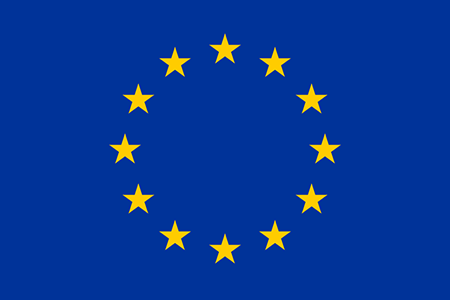
The process to remove an embedded component of the global financial system – the London Interbank Offered Rate (LIBOR) – is nearing completion, and the transition to alternative rates is gaining pace among banks and financial institutions. LIBOR is a global reference interest rate calculating the daily cost of short-term borrowing. The benchmark is published across five currencies (Sterling, US Dollar, Euro, Swiss Franc and Japanese Yen) and seven maturities (ranging from overnight to 12 months). LIBOR is widely used for funding and other capital needs covering financial products such as derivatives, bonds, loans, securitisations and deposits. With potential adjustments to original deadlines under way, the benchmark is expected to end for most currencies by 2022.
Following concerns over the integrity and the significant reduction in transactions in unsecured interbank lending, regulatory authorities and financial administrators from around the world – including the Financial Conduct Authority (FCA) and the ICE Benchmark Administration – decided to substitute LIBOR for more robust, “risk-free” rates. Risk-free rates (RFRs) are overnight rates calculated using underlying market activity and history of transactions. Due to their anchored nature in active, liquid markets, they are seen as a more transparent replacement to LIBOR.
Thus, in response to the needs of the financial system, working groups have been established to assess and select the appropriate alternative RFRs for major currencies. In the UK, the Bank of England Working Group on the Sterling RFR has reviewed several options and recommended the Sterling Overnight Indexed Average rate (SONIA) as its preferred benchmark rate. In the US, the Alternative Reference Rates Committee identified the Secured Overnight Funding Rate (SOFR).
The table below provides with an overview of rates, indicating the preferred alternative reference rate for each relevant currency:
 |
 |
 |
 |
 |
|
Currency |
GBP |
USD |
EUR |
CHF |
JPY |
Reference Rate |
GBP LIBOR |
USD LIBOR |
EUR LIBOR EONIA |
CHF LIBOR |
JPY LIBOR TIBOR |
Proposed alternative rate |
SONIA (Sterling Overnight Index Average) |
SOFR (Secured Overnight Financing Rate) |
€STR (Euro Short-Term Rate) |
SARON (Swiss Average Rate Overnight) |
TONAR (Tokyo Overnight Average Rate) |
Features |
Fully transaction-based Overnight Unsecured |
Fully transaction-based Overnight Secured |
Fully transaction-based Overnight Unsecured |
Based on transactions and binding quotes Overnight Secured |
Fully transaction-based Overnight Unsecured |
Forum |
Working Group on Sterling Risk-Free Rates |
The Alternative Reference Rates Committee |
Working Group On Euro Risk-Free Rates |
The National Working Group on Swiss Franc Reference Rates |
Cross-Industry Committee on JPY Interest Rate Benchmarks |
Initially, regulators targeted end of December 2021 as the deadline for financial contracts and transactions to cease to reference LIBOR. However, for most USD LIBOR tenors ranging from overnight to 12-month – excluding one-week and 2-month – an 18-month extension has been applied until end of June 2023. This delay has been welcomed across the industry, with more recent announcements by the FCA allowing limited use of USD LIBOR after the new deadline, for purposes including market making and hedging. Likewise, the extension in the USD LIBOR has had knock-on effects in other currencies. Last week, UK regulators announced proposals to continue using a “synthetic” LIBOR number through 2022, which would affect Sterling and Yen markets.
Although the impact on your business should be minimal, there are key differences between rates worth considering. Transitioning to alternative rates will affect how contracts are priced and how risks are managed, so it’s important to identify what this means for you and your business going forward.
For Trade Finance clients, the method for calculating confirmation rates will not change; however, the rates for discounting Letters of Credit (LCs) will start referencing Term RFRs. These term rates (such as the USD denominated Term SOFR) are typically lower than their equivalent LIBOR due to the removal of the credit risk pricing factor, this may mean that the margin quoted may appear higher, but the overall total interest calculated will remain broadly similar.
In this explanatory document, you can find an illustrative example of how an LC discounting rate may be calculated:
LIBOR Transition Trade Finance LC Discounting (PDF)
Considering these differences, specialist advice should be sought to ensure the move away from LIBOR goes as smoothly as possible. Thankfully our team is on hand to support you through this change.
BACB suggests that clients minimise their reliance on fallback language – the procedure for temporary replacement of LIBOR – to avoid potential instances of economic value transfer or contract frustration. As fallback language is solely intended for short-term unavailability of LIBOR, the contractual provisions are not fit for permanent discontinuation. Contractual provisions may need to be amended to reflect this and ensure that the difference between LIBOR and EONIA benchmark rates is addressed. If applicable, we recommend that you adhere to the ISDA 2020 IBOR Fallbacks Protocol.
As we approach the end of LIBOR, institutions should mobilise expertise and prepare to move to new offered risk-free rates. With ongoing discussion of potential deadline extensions across at least three currencies, timing will be crucial for a successful transition.